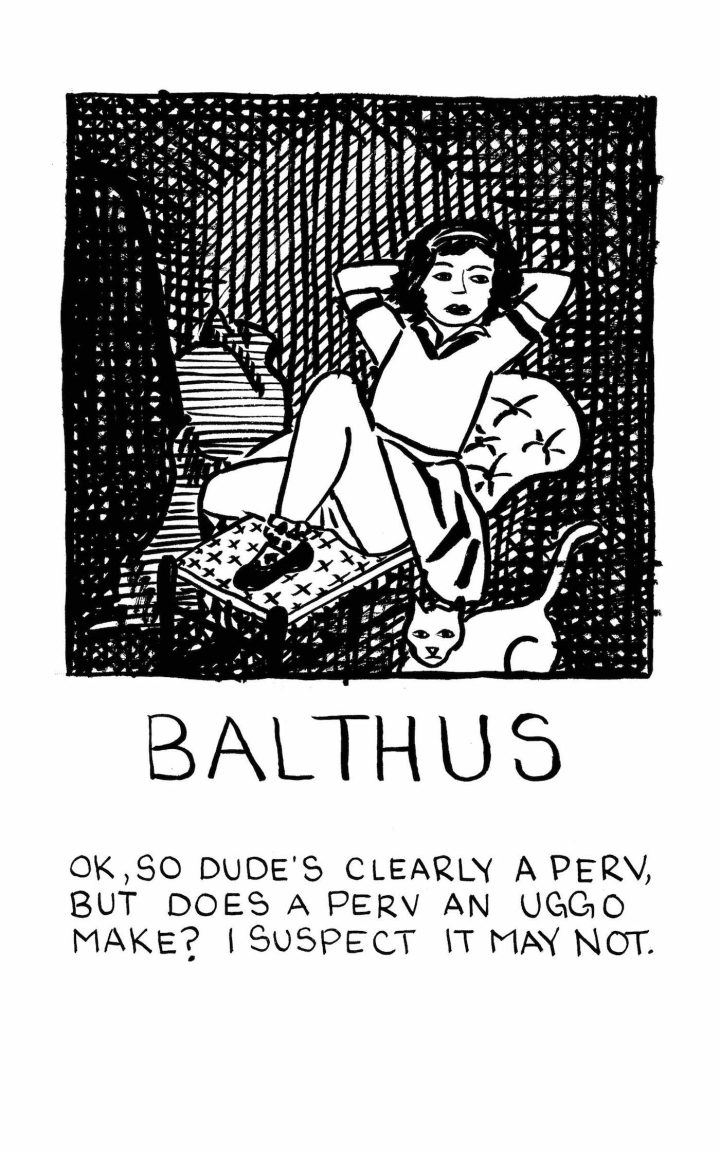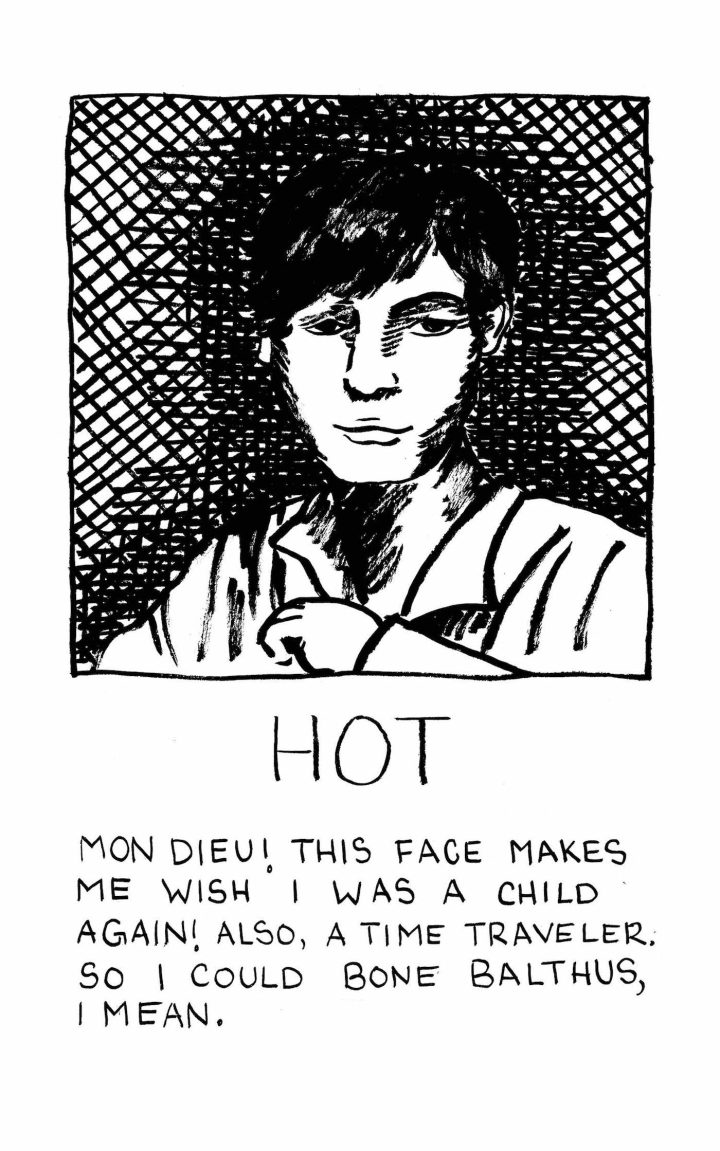Interviews
The Most Important Question About Modern Art’s Great Men: Hot or Not?
In her new book, Hot or Not: 20th-Century Male Artists, Jessica Campbell passes definitive judgment on sex appeal of canonical modernists.

So, British sculptor Henry Moore is deemed hot, Campbell’s portrait of him accompanied by her verdict: “This explains why Moore never seemed to have time enough to take an anatomy class: he was fending off private anatomy tutorials from every human who saw him.” Barnett Newman, however, is declared not hot, with the caveat: “Unless your type is ‘Snobby Super Mario’.”
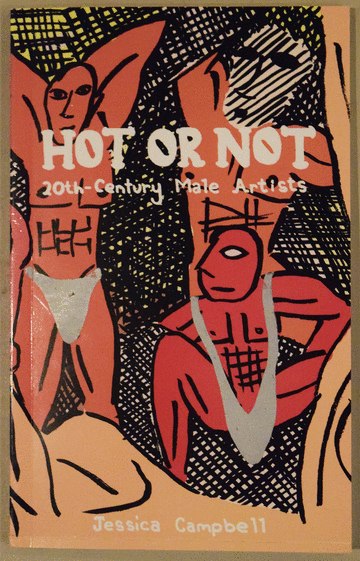
I contacted Campbell (with whom, full disclosure, I went to high school) to get a sense of the origins of this entertaining inversion of the gender dynamics of art history — and of her peculiar taste in canonical modernists.
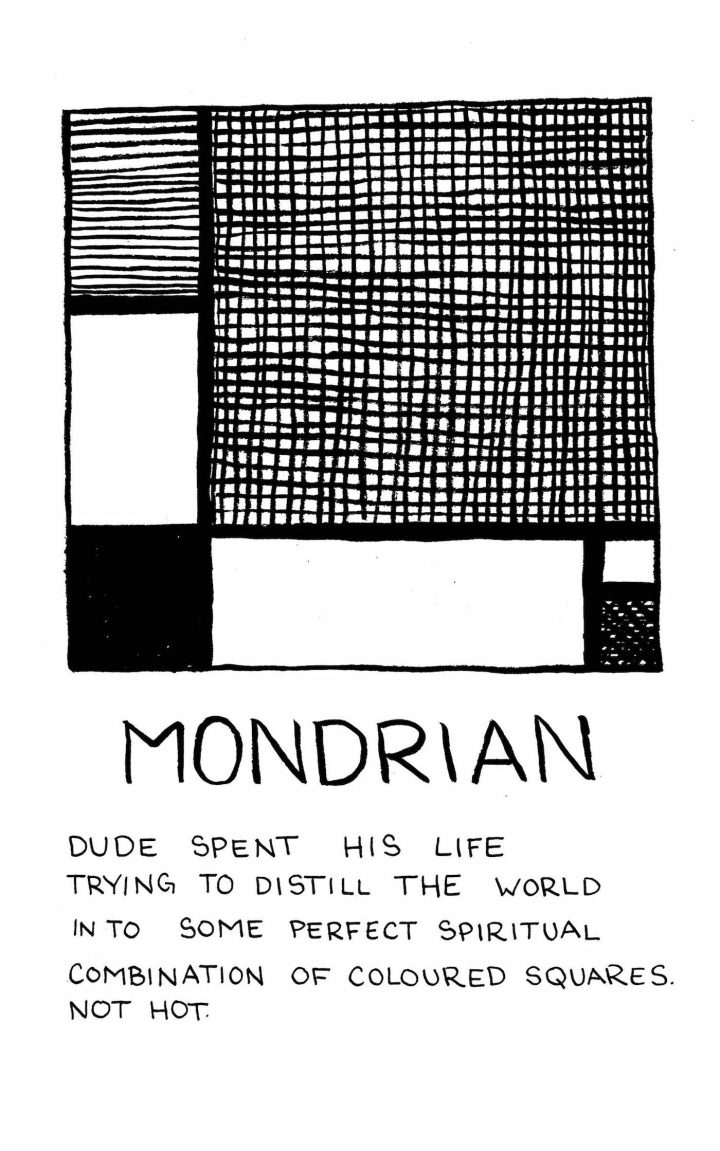
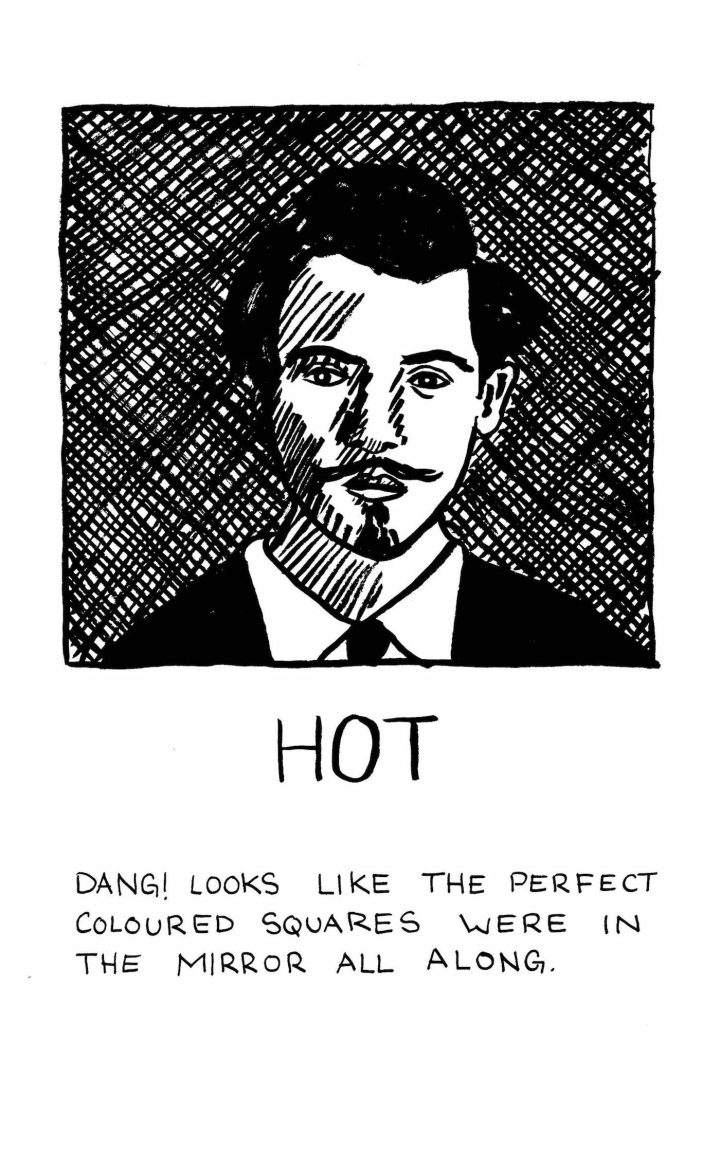
* * *
Benjamin Sutton: Your book turns the concept of
the male gaze and the historically gendered dynamic between the artist
and the model on their heads. How did you first come up with this idea?Jessica Campbell: When Cy Twombly died, I was working with the cartoonist Lynda Barry and she sent me a photo of the painter as a handsome young man and (jokingly) wrote: “Twombly when he was my boyfriend.” I was amazed; Twombly was hot! I began to realize that I could call to mind the visage of very few artists of the 20th century and started Googling around. Koyama Press had approached me about potentially working with them a few years back, so I proposed a book where I could publish my opinions as the definitive resource on the looks of male painters.
Pieces like the Guerrilla Girls‘s “Do women have to be naked to get into the Met. Museum?” poster, and their work more generally, are certainly influential on my way of thinking. I was also, however, thinking about recent events in the comics world, like how no women were nominated for the Palme D’Or lifetime achievement in comics award at the Angoulême festival in France, and then, when there was outcry, the director responded by saying that there were few women in comics, just as there are few women in the Louvre. It’s exhausting.
BS: How did you choose which artists to include? Were you mostly drawn to extremes of ugliness and hotness? Also, your cover image is a riff on Picasso’s “Les Demoiselles d’Avignon,” and yet Picasso is not evaluated in the book.Why?
JC: One of the few rules that I set out for myself was that I could not immediately call to mind what the artist looked like. So, artists like Picasso, Warhol, and Pollock were off the table. They are too iconic, too recognizable.
There are, unfortunately, thousands of artists who needed to be cut from the book, though this means that I can spend the rest of my career working on sequels to fill in the art historical gaps. I’m hoping it will turn in to the Fast and Furious of book series.
BS: True to Canada’s cultural quota system, you’ve included a section devoted to Canadian artists. How did you select the four artists featured therein, and would you indulge me and give your “hot or not” verdicts on Tom Thomson and Alexander Colville?
JC: Yes, Cancon is very important to me! I have, herein, included verdicts on Thomson and Colville previously unpublished, so that inquiring minds can know.

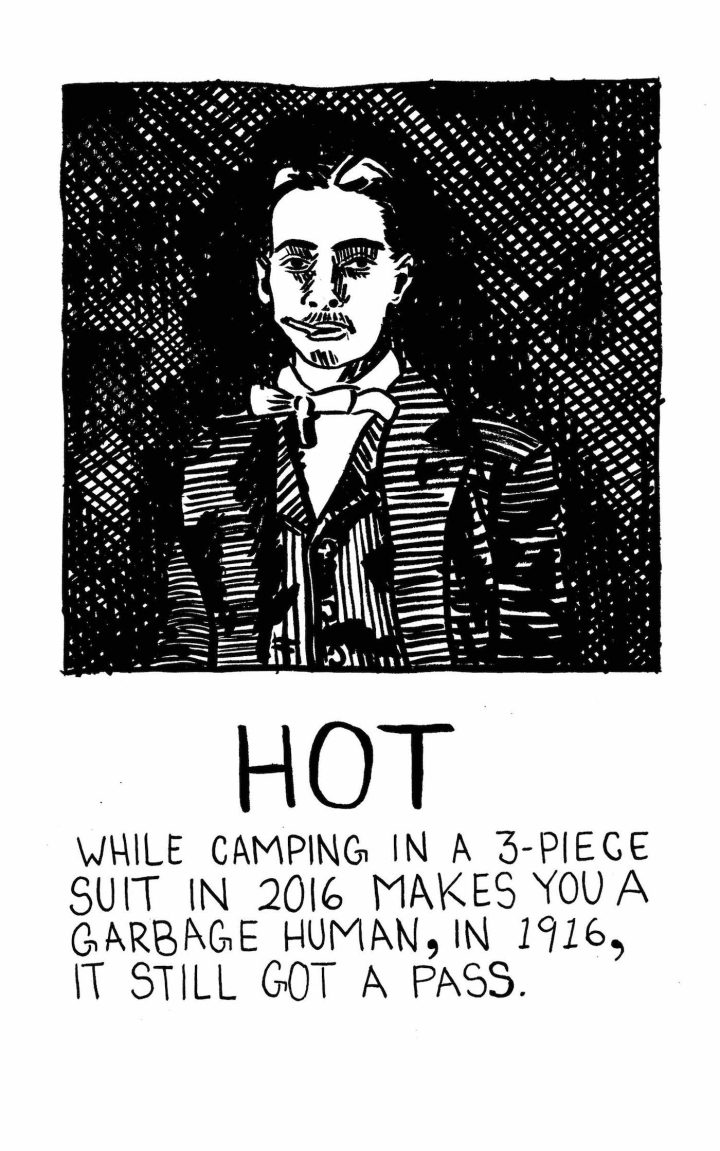
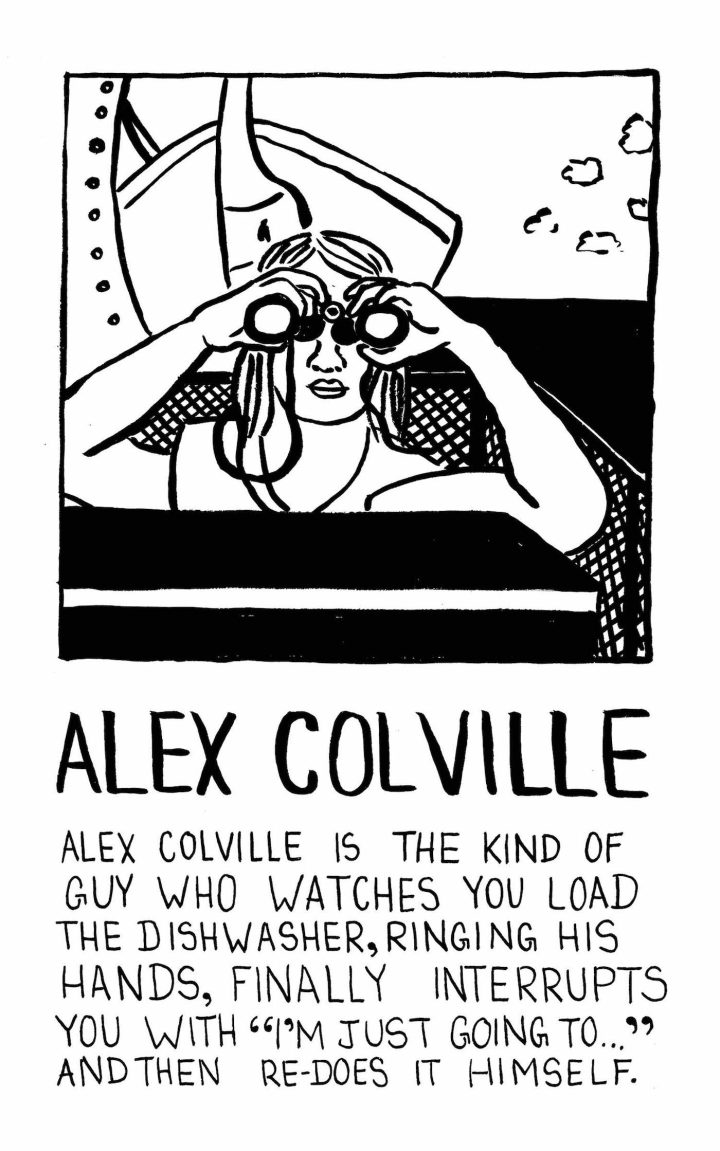

And, in the grand tradition of Canada laying claim to all notable people who ever set foot there (see: Heritage Minutes), I was happy to include the Canadian-born American Philip Guston in the Canadian section.
BS: Your book’s first two sections are devoted to relatively clear categories of art — Canadian and geometric abstraction — but then the sections get very subjective. How did you settle on these particular groupings?
JC: Initially the book did not have sections, an introduction, or a postscript. This format, however, felt very abrupt, so I wanted a way of making the information work together, which is how I decided to position myself within the text as a docent. The next logical step was to divide the work into sections of a museum. I had already completed the interior pages, however, so I needed to develop sections that felt correct for the artists I had chosen.
Frankly, “erotic freaks” feels like an apt (if too direct) way to assess the unending series of paintings in the Art Institute of Chicago where women’s nipples have mysteriously popped out of their dresses. I have had human breasts for like 16 years and that has never come close to happening to me, particularly not while sitting for a portrait, at which point, it seems like you could easily say “Hey, hold on a sec; let me pull this shirt up.”
BS: Your book does not include any living artists. Is this because you wanted to focus on more canonical figures, or were you concerned about hurting living artists’ feelings? Couldn’t you have included Georg Baselitz and then made light of his outer and inner ugliness?
JC: It was a bit of both of these things. I like the idea of throwing my body against the canon, of positing my shallow judgements on their looks as the most important record of art of the preceding century. I can make fun of Matisse forever and he’ll never know or care. I also am a sensitive person and did not want to hurt artists’ feelings. Which, considering that Baselitz dismissed the work of straight up half the population because of their genitals, is probably not something I should have cared about.
